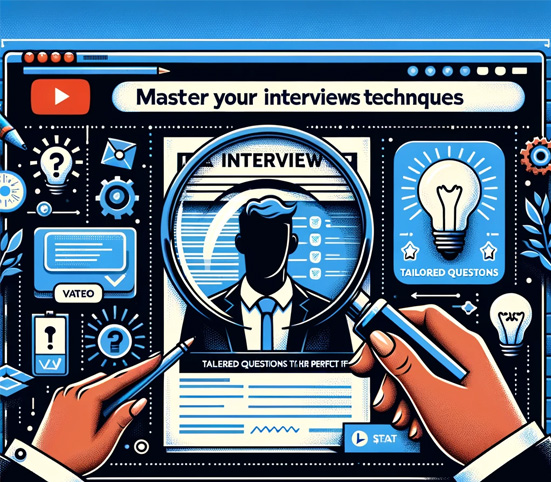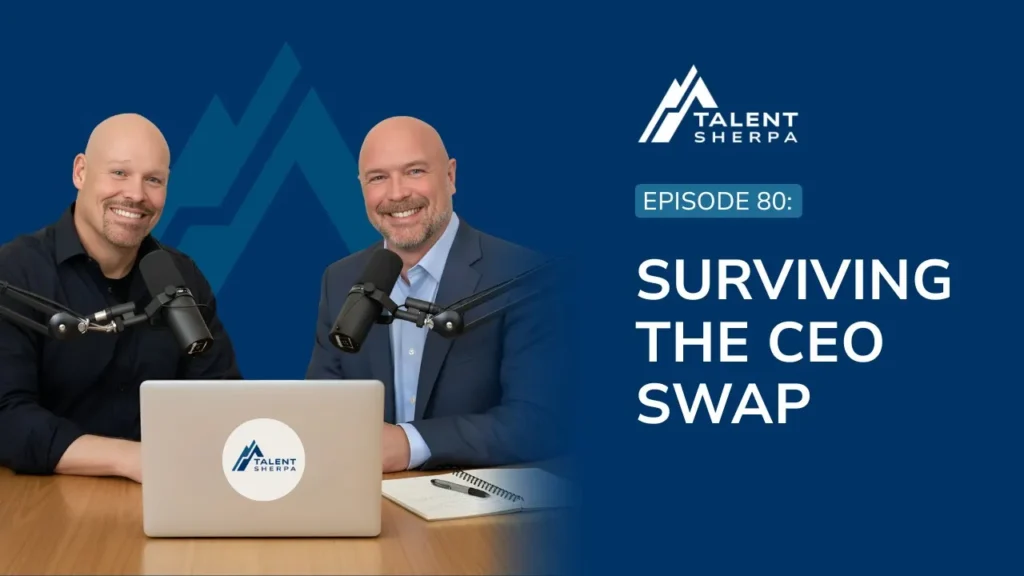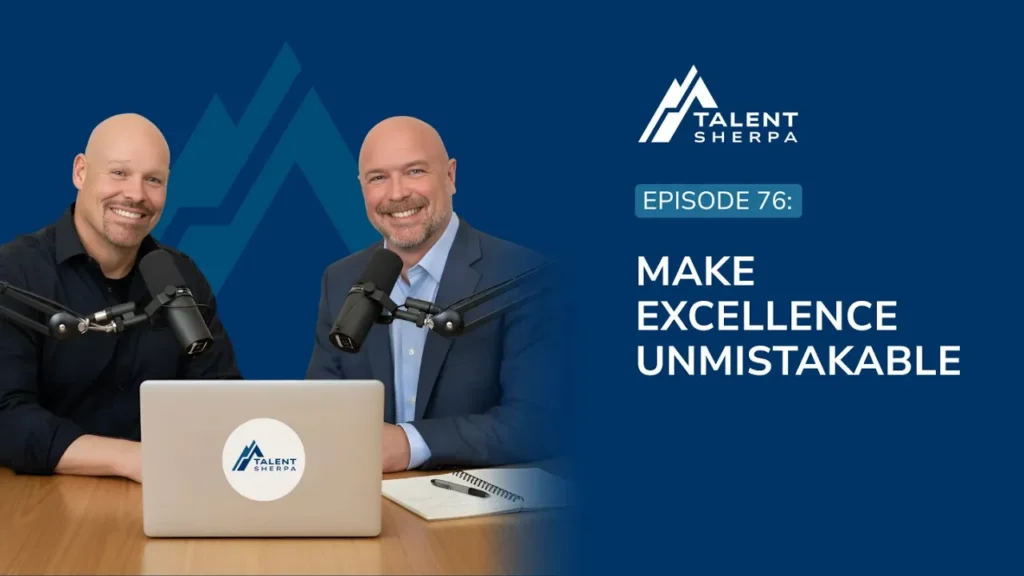Organizations are racing to adopt AI recruiting tools, investing millions in technology that promises to find better candidates faster. While 86% of recruiters report that their CEOs expect them to build the workforce of the future, only one-third consider themselves “AI power users” who strategically combine technology and human skills. Yet many are discovering their sophisticated AI systems are only amplifying a fundamental problem: managers haven’t thoughtfully considered how roles fit strategy, what outcomes need to be generated, or the specific success measures that will be used. The issue isn’t the technology – it’s the absence of a clear blueprint. Before AI can find the right candidate, managers need to create an effective design for what success actually looks like.
This economic climate requires that businesses be agile, and that’s especially true when it comes to talent strategies.
Karin Kimbro, LinkedIn Chief Economist
The AI Adoption Paradox
Seventy percent of global employers now use AI in recruitment, and the technology delivers impressive results when implemented correctly. LinkedIn’s Hiring Assistant users reduced pre-screening time to just eight minutes and saw a 70% increase in InMail acceptance rates. Companies implementing AI recruitment solutions report saving between $1.2 million and $3.5 million annually.
Yet despite widespread adoption, nearly half of recruiters worry their organizations will fall behind competitors. More troubling: only 22% of employees using AI report having a clear organizational strategy for how to use it.
But there’s a deeper problem hiding beneath the strategy gap. Even the most sophisticated AI recruiting system can’t overcome unclear role design.
Garbage In, Garbage Out
Consider what happens in most organizations today. A manager decides they need to hire someone. They pull up an old job description – often outdated, focused on tasks rather than outcomes, and disconnected from current business objectives. They make quick edits and send it to HR. The recruiting team feeds this into their new AI system, which efficiently sources candidates who match the unclear requirements.
The result? The AI works perfectly, but it’s solving the wrong problem.
This explains why 72% of hiring managers believe they’re posting clear job descriptions, but only 36% of candidates agree. It’s why 42% of employers have rewritten job descriptions because they attracted unqualified candidates. It’s why 74% of employers admit hiring the wrong person for an opening, with 80% of unwanted turnover attributable to hiring mistakes.
The job description isn’t the problem – it’s a symptom. The real issue is that managers have historically treated role definition as an administrative task rather than a strategic design process, in part because doing anything different was onerous and time-consuming. That’s simply not the case today.
The Strategic Blueprint
Most managers view creating job descriptions as bureaucratic box-checking – something to rush through so they can get to “real work.” They spend hours struggling to articulate requirements, often alone, without a structured process to guide their thinking.
What they’re missing is that role design isn’t about filling out forms. It’s about answering fundamental questions:
- How does this role connect to our strategic objectives?
- What outcomes must this role deliver in the first year?
- What does success look like, and how will we measure it?
- How should this person operate to create value?
When managers skip this strategic thinking, consequences cascade through the entire employee lifecycle. Without a clear blueprint, recruiters can’t be highly targeted with their search for candidates, leading to larger applicant pools that require more screening time. Managers can’t effectively evaluate candidates during interviews because they lack clear criteria for what success looks like. Once hired, employees lack clear expectations – according to Gallup, only 46% of employees clearly know what’s expected of them at work, down from 56% in 2020. Performance management becomes subjective when there are no outcome-focused standards to measure against. Employee autonomy suffers because managers who haven’t clearly defined success tend to micromanage.
From Administrative Burden to Competitive Advantage
The most valuable AI tools aren’t those that simply automate existing processes – they’re the ones that fundamentally improve how managers think about talent.
Strategic role design requires a guided process that prompts managers to think deeply about what they’re trying to accomplish. It requires moving from task lists to outcome definitions. It requires connecting individual roles to organizational objectives. And critically, it requires doing this before the search begins.
When managers engage in genuine role design, the benefits multiply. The resulting blueprint attracts higher-quality candidates because it clearly communicates what success looks like. The interview process becomes more focused because everyone understands what they’re evaluating. Once someone is hired, both manager and employee have shared clarity about expectations, leading to greater autonomy and faster productivity. Performance management becomes more objective because it’s measured against clearly defined outcomes.
Perhaps most importantly, this process transforms how managers lead. When forced to articulate what they truly need from a role, managers often discover they’ve been managing tactically rather than strategically.
Building AI Strategy on a Solid Foundation
As organizations continue investing in AI recruiting technology, they face a critical choice. They can keep feeding sophisticated AI systems with poorly designed role requirements, wondering why their expensive technology isn’t delivering expected results. Or they can step back and address the foundation.
The companies seeing the greatest return on their AI recruiting investments aren’t necessarily those with the most advanced technology. They’re the ones who’ve recognized that AI amplifies whatever you put into it. Clear, strategically designed roles lead to targeted searches, better candidate matches, and stronger hires. Unclear, task-focused role definitions lead to expensive recruiting cycles that end in poor fits and costly turnover.
Conclusion
The future of AI recruiting isn’t just about better algorithms. It’s about ensuring that before technology searches for candidates, managers have created a clear blueprint for success. PropulsionAI addresses this challenge head-on by guiding managers through a strategic role design process in as little as 15 minutes – transforming what’s typically an hours-long administrative burden into a focused conversation that generates genuine clarity. Through thoughtful questions and dynamic interaction, the platform helps managers define how roles connect to strategy, what outcomes need to be generated, and the specific success measures that will be used. The result isn’t just a better job description – it’s a comprehensive blueprint that makes every downstream activity more effective, from sourcing to performance management. Organizations that invest in strategic role design won’t just hire better. They’ll build stronger teams, develop more effective leaders, and create the clarity that drives performance throughout the employee lifecycle.
Ready to transform your hiring process from the foundation up? Try PropulsionAI 100% free
Want More?
- “The Performance Management Revolution” – Peter Cappelli and Anna Tavis on Harvard Business Review (link)
- “Help your employees find purpose – or watch them leave” – McKinsey & Company (link)
- “AI in Recruitment: Managing the Risks for Successful Adoption” – AIHR (link)




